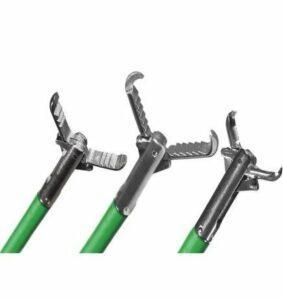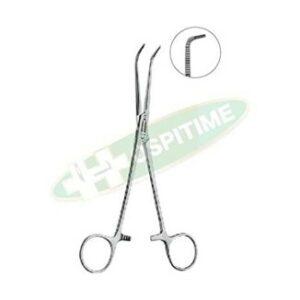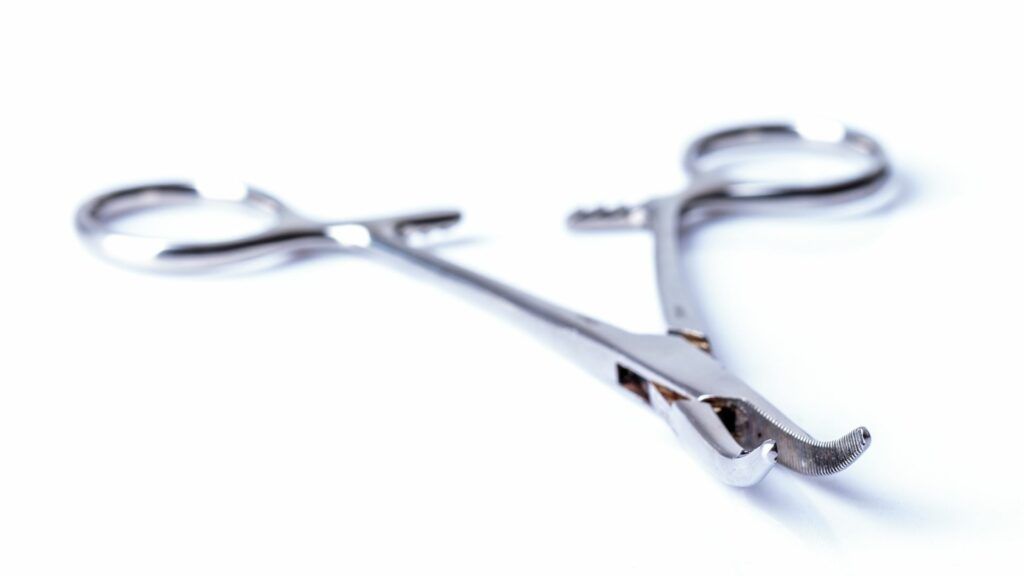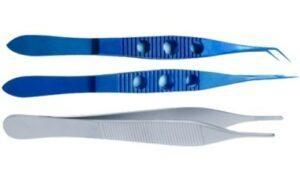Surgical forceps are vital tools in the medical field, providing precision and control in various procedures. In this blog, we explore their wide applications, types, and best practices for care. Medzell, a futuristic B2B platform promoting Indian medical devices in emerging markets, understands the significance of surgical forceps. Our goal is to connect professionals with high-quality instruments, enhancing patient outcomes. Discover the diverse uses of surgical forceps, from grasping to hemostasis, and gain insights into selecting the right ones for specific needs. Explore advancements in design and technology that enhance surgical precision. Master essential techniques, troubleshoot common issues, and ensure safe disposal practices. Join us on this journey to uncover the versatility of surgical forceps in modern medicine.
Unveiling the Versatility of Surgical Forceps
Surgical forceps are indispensable tools in the medical field, playing a vital role in a wide range of medical procedures. These versatile instruments are designed with precision and functionality in mind, allowing medical professionals to perform delicate tasks with ease and accuracy.
One of the primary applications of surgical forceps is in the field of surgery. They are commonly used for tissue manipulation, holding, and grasping during surgical procedures. The fine, slender tips of forceps enable surgeons to handle delicate tissues and structures with precision, minimizing trauma and ensuring optimal surgical outcomes.
Surgical forceps are also utilized in other medical procedures, such as wound management and dressing changes. They enable healthcare professionals to hold dressings, remove sutures, and handle sterile materials safely and efficiently. Furthermore, forceps play a crucial role in hemostasis, allowing for the precise control of bleeding during surgical interventions.
Different Types of Surgical Forceps
Surgical forceps are used in various medical procedures. Understanding the different types and their specific applications is crucial for medical professionals. Take a look at the extensive range of surgical forceps to gain valuable clinical knowledge.
- Mosquito Forceps: Mosquito Forceps, a delicate yet crucial instrument in surgical settings, is specifically designed to handle small blood vessels with utmost precision. These forceps are essential for surgeries that involve intricate procedures, such as microsurgery or vascular surgery. With their fine and slender jaws, Mosquito Forceps enable surgeons to achieve accurate maneuvering and control during the most delicate of procedures. The specialized design of these forceps ensures that surgeons can navigate small blood vessels without causing unnecessary damage, contributing to successful outcomes in complex surgeries.
- Hemostatic Forceps: Also known as artery forceps or clamps, Hemostatic Forceps play a pivotal role in controlling bleeding during surgical procedures. With their strong locking mechanism, these forceps provide a secure grip on blood vessels, effectively halting blood flow and allowing surgeons to work with a clear field of view. Their significance lies in ensuring efficient hemostasis, which is crucial to prevent excessive bleeding that can compromise surgical success. These forceps are indispensable tools that empower surgeons to handle situations involving blood vessels confidently.
- Dressing Forceps: Featuring broader, non-traumatic tips, Dressing Forceps are designed to hold dressings, gauze, or sterile swabs during wound management or dressing changes. The gentle grip of these forceps minimizes patient discomfort while facilitating the necessary procedures. Their specialized design caters to maintaining sterility and accuracy during wound care. The use of Dressing Forceps helps medical practitioners maintain a hygienic environment while ensuring that patients experience minimal pain and discomfort during the process.
- Tissue Forceps: Also referred to as thumb forceps, Tissue Forceps are designed with serrated jaws to securely grasp delicate tissues during various surgical procedures. These forceps are invaluable for tissue dissection, suturing, and other intricate maneuvers. Their design allows surgeons to handle delicate tissues without causing unnecessary trauma, thereby contributing to optimal healing and recovery. The versatility of Tissue Forceps makes them a staple in surgical settings, accommodating a wide range of surgical needs.
- Adson Forceps: Adson Forceps stand out with their fine, serrated tips and small teeth, making them particularly useful for procedures that demand a firm grip on tissues or sutures. These forceps find their applications in plastic surgery, dermatology, and other delicate procedures where precision is paramount. The specialized design of Adson Forceps allows surgeons to handle tissues and sutures with control, ensuring accurate placement and minimizing the risk of complications. Their role in delicate surgeries highlights their significance in achieving aesthetic and functional outcomes.
- Dental Forceps: Dental Forceps are specialized instruments used exclusively in oral and maxillofacial surgeries for tooth extraction. Available in various shapes and sizes, Dental Forceps are tailored to suit different tooth types and extraction techniques. Their precise design and application make them essential tools in dental procedures, ensuring successful extractions with minimal discomfort to the patient.
- Ophthalmic Forceps: Ophthalmic Forceps are meticulously crafted for delicate eye surgeries, where the handling of ocular tissues and sutures requires exceptional precision. These forceps enable surgeons to achieve optimal outcomes by providing a controlled and gentle grip on the delicate structures of the eye. Their specialized design ensures that ocular tissues are handled with care, minimizing the risk of damage during surgical procedures. Ophthalmic Forceps play an integral role in maintaining eye health and vision, making them indispensable tools for ophthalmic surgeons.
- Dissecting Forceps: Widely used in general surgery, Dissecting Forceps are versatile tools designed for tissue dissection, manipulation, and retraction. These forceps have a sturdy build and come in various tip designs to meet specific surgical requirements. The serrated jaws of Dissecting Forceps provide a secure grip on tissues, allowing surgeons to navigate through different layers of tissue with precision. Their adaptable nature makes them essential instruments in various surgical procedures, enabling effective dissection and tissue manipulation.
- Grasping Forceps: Grasping Forceps are instrumental in securely holding tissues, organs, or foreign bodies during surgical procedures. These forceps provide surgeons with the control and stability needed to perform intricate maneuvers. The grip offered by Grasping Forceps ensures that tissues remain in place during procedures, facilitating precision and accuracy. Their role in providing a stable operating field is crucial for successful surgeries that require controlled manipulation and accurate placement.
- Biopsy Forceps: Biopsy Forceps serve a diagnostic purpose by allowing the retrieval of small tissue samples for analysis. These forceps are designed to minimize trauma to surrounding tissues while obtaining samples for pathological examination. The gentle grip of Biopsy Forceps ensures that tissue samples are collected with precision and minimal disruption. Their application aids in accurate diagnoses, contributing to effective treatment plans and patient care.
Understanding the versatility and applications of surgical forceps empowers medical professionals to choose the most suitable instrument for each surgical situation. Utilizing the right forceps enhances precision, improves patient outcomes, and ensures efficient procedures.
Making the Right Choice: Key Factors for Purchasing Surgical Forceps
Quality and durability are essential factors to consider; opt for surgical forceps made from high-quality materials like stainless steel to ensure durability and longevity. Forceps with ergonomic features like finger grips, textured handles, and smooth operation enhance precision and minimize hand fatigue during surgical procedures.
The range of applications and intended uses of the forceps is also an important factor to consider. Different procedures may require specialized forceps, such as fine-tip forceps for delicate surgeries or locking forceps for secure grasping. Size and length are other important considerations; choosing forceps with appropriate sizes and lengths based on the specific procedure requirements and anatomical considerations ensures accurate manipulation while avoiding tissue damage.
Sterilization compatibility is also crucial; confirm that the forceps are compatible with common sterilization methods used in your healthcare facility. While it’s important to invest in high-quality forceps, consider options that offer the best value for your budget.
From Grasping to Extraction: Understanding the Versatile Uses of Surgical Forceps
Surgical forceps are essential instruments with versatile uses in various medical procedures. They provide a secure grip, allowing surgeons to hold and manipulate tissues during procedures like tissue dissection, organ retraction, or wound exploration. Surgical forceps are also used for extraction, whether it’s tooth extraction in dentistry or foreign body removal in general surgery. Hemostatic forceps are vital for achieving hemostasis during surgeries, while surgical forceps are used for delicate tissue handling during wound closure, suturing, or grafting. They also provide better visibility and access to the surgical site by retracting tissues, enabling surgeons to perform procedures more effectively. Adson forceps, for instance, are commonly used for suturing purposes. Surgical forceps are instrumental in removing foreign bodies from various anatomical sites and in obtaining tissue samples for diagnostic purposes. By understanding the versatile uses of surgical forceps, medical professionals can use these instruments effectively in their respective specialties, enhancing surgical precision and improving patient outcomes.
Essential Techniques for Using Surgical Forceps
Mastering the use of surgical forceps is vital for medical professionals. Here are key techniques for skillfully using forceps in procedures:
- Proper Grasping: Learn the correct grip and hand positioning for different forceps types.
- Tissue Handling: Develop finesse in gentle lifting, rotation, and retraction for optimal exposure.
- Hemostasis: Achieve effective control of bleeding by clamping or compressing blood vessels.
- Suturing Assistance: Hold tissue edges together or manipulate sutures for accurate wound closure.
- Foreign Body Removal: Safely extract foreign objects with specialized forceps.
- Handling Delicate Structures: Carefully manipulate nerves or blood vessels to avoid trauma.
- Electrocautery Techniques: Understand safe usage for precise tissue dissection or vessel sealing.
Master these techniques to optimize patient outcomes and elevate your expertise with surgical forceps.
Mastering Safety: Guidelines for Proper Handling of Surgical Forceps
Proper handling of surgical forceps is crucial for the safety of healthcare providers and the success of surgical procedures. Begin by familiarizing yourself with the different types of forceps and their specific uses to select the most appropriate instrument for each procedure. Maintain strict adherence to sterilization protocols to prevent infections, ensuring that forceps are properly sterilized before each use. Adhere to the aseptic technique, using sterile gloves and gowns and avoiding contamination of the surgical field. Develop the necessary dexterity for a firm yet gentle grip, exercising control without applying excessive force. During instrument passing, communicate clearly and coordinate with team members to minimize the risk of dropping or injury. Avoid direct forceps-to-skin contact whenever possible, utilizing non-traumatic techniques to reduce the risk of punctures or tissue trauma. Regularly inspect forceps for damage or malfunction, promptly removing compromised instruments from circulation. By prioritizing safety and adhering to these guidelines, healthcare providers can confidently handle surgical forceps and provide optimal care to their patients.
Swift Solutions: Troubleshooting Common Issues with Surgical Forceps
Surgical forceps are reliable tools used in medical procedures. However, they may encounter occasional issues. Here are practical solutions to common problems.
- Sticking or Jamming: Gently manipulate the forceps, checking for debris or foreign objects. Clean with a sterile solution if needed.
- Misalignment: Inspect for uneven or overlapping tips. Consult the manufacturer or repair service for realignment.
- Instrument Malfunction: Remove the malfunctioning forceps immediately. Replace with a functional one.
- Tension or Spring Issues: Consult the instrument management department for adjustment or replacement.
- Cleaning and Sterilization: Follow proper cleaning and sterilization protocols to prevent debris or corrosion.
By addressing these issues, medical professionals can ensure smooth procedures and optimal patient care. Remember to document and report any instrument issues for further investigation.
Pushing Boundaries: Innovations in Surgical Forceps
The field of surgical forceps is experiencing groundbreaking advancements, revolutionizing surgical precision and outcomes through innovative designs and technologies. Staying updated on these innovations empowers medical professionals to deliver the best possible care. Here are some remarkable advancements in surgical forceps:
- Enhanced Ergonomics: Innovative forceps designs focus on ergonomic improvements, such as adjustable handles and improved grip surfaces, reducing hand fatigue and promoting better surgical accuracy.
- Miniaturization: Miniaturized surgical forceps enable precise procedures in microsurgeries and minimally invasive procedures, providing improved maneuverability and access to confined surgical sites.
- Integrated Energy Devices: Some forceps now integrate energy devices, such as electrocautery or ultrasonic energy, streamlining surgical workflows by enabling tissue dissection or sealing during grasping.
- Specialty Forceps: Specialty forceps are tailored for specific procedures, such as articulating forceps for better access and vessel sealing forceps for simultaneous sealing and cutting of blood vessels.
- Imaging and Visualization: Forceps with integrated imaging capabilities, such as mini cameras or endoscopic views, provide real-time visualization during surgeries, enhancing precision and efficiency.
- Smart Forceps: Cutting-edge forceps equipped with sensors or RFID technology track instrument usage, monitor sterilization cycles, and streamline inventory control and sterilization protocols.
Surgical Forceps from Leading Indian Manufacturers
PCNL Forceps (Biprong / Triprong / Alligator)
 PCNL Forceps (Biprong / Triprong / Alligator), produced by Kara Mediclust Private Limited, serve as versatile instruments employed in urological interventions for the extraction of kidney stones. They are available in a variety of lengths and configurations, meticulously tailored for percutaneous nephrolithotomy procedures. These procedures involve the introduction of instruments through a small incision in the patient’s back to access and remove kidney stones.
PCNL Forceps (Biprong / Triprong / Alligator), produced by Kara Mediclust Private Limited, serve as versatile instruments employed in urological interventions for the extraction of kidney stones. They are available in a variety of lengths and configurations, meticulously tailored for percutaneous nephrolithotomy procedures. These procedures involve the introduction of instruments through a small incision in the patient’s back to access and remove kidney stones.
Notably advantageous, PCNL forceps exhibit their prowess in managing intricate stone cases and pediatric patients, providing a minimally invasive avenue for precise stone removal. These forceps enable surgeons to delicately manipulate and access challenging-to-reach stones with accuracy.
Distinguished by their ergonomic handles, PCNL forceps are offered in diverse dimensions, ensuring compatibility with various stone sizes and anatomical locations. When compared to alternative stone retrieval devices, PCNL forceps stand out for their heightened precision and user-friendly nature, elevating the overall efficacy of kidney stone removal procedures.
Jeweler Forceps
 Jeweler Forceps, crafted by A.S.F. Universal, are renowned surgical instruments highly valued in a wide range of medical procedures. These forceps are synonymous with precision and reliability, earning them the trust of healthcare professionals worldwide. With their exceptional design and impeccable craftsmanship, Jeweler Forceps offers unrivaled performance and accuracy in delicate surgical tasks. They are available with multiple tip variations, including plain, platform, and straight-slender tips with the tooth, catering to diverse procedural requirements. Whether it’s suturing, tissue manipulation, or meticulous surgical maneuvers, Jeweler Forceps excel in providing the necessary dexterity and control, ensuring optimal outcomes and patient safety. Count on Jeweler Forceps to elevate your surgical precision and efficiency to unprecedented levels.
Jeweler Forceps, crafted by A.S.F. Universal, are renowned surgical instruments highly valued in a wide range of medical procedures. These forceps are synonymous with precision and reliability, earning them the trust of healthcare professionals worldwide. With their exceptional design and impeccable craftsmanship, Jeweler Forceps offers unrivaled performance and accuracy in delicate surgical tasks. They are available with multiple tip variations, including plain, platform, and straight-slender tips with the tooth, catering to diverse procedural requirements. Whether it’s suturing, tissue manipulation, or meticulous surgical maneuvers, Jeweler Forceps excel in providing the necessary dexterity and control, ensuring optimal outcomes and patient safety. Count on Jeweler Forceps to elevate your surgical precision and efficiency to unprecedented levels.
MEDORAH Foreign Body Forceps
 MEDORAH Foreign Body Forceps, designed and synthetic with the aid of using Medorah Meditek Pvt. Ltd., are specialized instruments used for the safe and effective removal of foreign bodies from the body. These forceps are available in different variants, including hybrid, alligator, and rat tooth forms, allowing healthcare professionals to choose the most suitable option for the specific foreign body removal procedure.
MEDORAH Foreign Body Forceps, designed and synthetic with the aid of using Medorah Meditek Pvt. Ltd., are specialized instruments used for the safe and effective removal of foreign bodies from the body. These forceps are available in different variants, including hybrid, alligator, and rat tooth forms, allowing healthcare professionals to choose the most suitable option for the specific foreign body removal procedure.
The forceps feature a flexible metallic tube that encloses a metallic wire, enabling the grasping of foreign objects. The jaws of the forceps can be opened and closed by moving the slider back and forth over the handle body, providing precise control during the procedure. With their high-quality construction and ergonomic design, MEDORAH Foreign Body Forceps ensure efficient foreign body removal while minimizing tissue damage.
Hemostat Forceps, Ligature “MIXTURE”
 Hemostat Forceps, Ligature “MIXTURE”, manufactured by HOSPITIME INDIA, are highly reliable instruments widely used in a variety of surgical procedures. These forceps are specifically designed with a 90-degree angled design and serrated tips, allowing for secure gripping and precise manipulation of tissues during surgeries. Crafted from high-quality German stainless steel, these forceps offer exceptional corrosion resistance, ensuring their durability and longevity even with frequent use. The sturdy construction and reliable performance of Hemostat Forceps, Ligature “MIXTURE,” make them an essential tool for surgeons, providing the necessary precision and control required for successful surgical outcomes.
Hemostat Forceps, Ligature “MIXTURE”, manufactured by HOSPITIME INDIA, are highly reliable instruments widely used in a variety of surgical procedures. These forceps are specifically designed with a 90-degree angled design and serrated tips, allowing for secure gripping and precise manipulation of tissues during surgeries. Crafted from high-quality German stainless steel, these forceps offer exceptional corrosion resistance, ensuring their durability and longevity even with frequent use. The sturdy construction and reliable performance of Hemostat Forceps, Ligature “MIXTURE,” make them an essential tool for surgeons, providing the necessary precision and control required for successful surgical outcomes.
Hair Transplant Forceps
Hair Transplant Forceps, manufactured by Adarsh Surgical Works, are essential tools used in hair transplant procedures, including Follicular Unit Extraction (FUE) and Follicular Unit Transplantation (FUT). These forceps are designed with precision and efficiency in mind, allowing surgeons to transplant hair cells into pre-cut holes in target sites accurately.
Hair Transplant Forceps come in a variety of shapes, lengths, and tip forms, such as grooved, plane, straight, angled, curved, and toothed jaws. They are meticulously crafted using the latest machines and undergo furnace tempering and hardening processes for optimal performance. With their low mass and ergonomic design, these forceps provide surgeons with a comfortable grip and smooth maneuverability.
Conclusion
This blog has provided valuable insights into surgical forceps, exploring their versatility, various types, and applications. We’ve discussed best practices for care, handling, troubleshooting, and factors to consider when purchasing. By mastering surgical forceps techniques, professionals can enhance their skills. Proper disposal and platforms like Medzell contribute to a hygienic environment and promote Indian medical devices in emerging markets. Incorporating this knowledge enhances patient care, improves surgical outcomes, and advances the medical field



